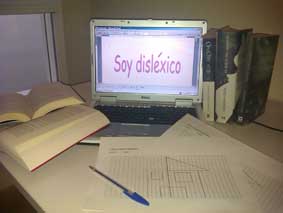
A research published by Universitat de València’s and DePaul University’s researchers in the prestigious journal ‘Learning and Instruction’ states that a slight change in the texts format can help children with dyslexia both to read better and improve their reading speed and comprehension. The study concludes that only a tiny, barely perceptible, increase in the spacing between the letters of the texts would be needed.
‘The results are relevant, though there is a long way to go in this area’ the principal author of the study, Manuel Perea, lecturer in ERI-Lectura at Universitat de València, has stated. According to this researcher, ‘previous studies showed that a slight increase in the spacing between letters could improve the reading process for adults and visually impaired people, but we wanted to help children with dyslexia and this idea made them avoid interferences produced by the closeness of other letters. This is a simple and intuitive idea, but it had never been tried before.’
In her turn, Victoria Panadero, researcher at Universitat de València and study’s co-writer, has added that it is important to find the right balance: ‘if the gap between letters is too wide, then the word is not recognized as a whole by the reader. At the same time, if there is little space between letters, these can interfere with each other.’
In one experiment, the children with dyslexia read two short tales, one displayed the regular spacing and the other had a sligh increase in the spacing between letters. In this second case, both the time that children took to read the tales and the reading comprensión improved substantially. The results have practical implications for publishers and electronic reader devices. ‘Most word processing programs already allow users to increase spacing between letters’, Dr. Pablo Gómez, lecturer of cognitive psychology at DePaul University (Chicago) and co-writer of the study, has clarified.
Thus, as Gómez has stated, ‘we hope that electronic readers like Kindle and iPad will soon allow users to increase the spacing between lines, and not only modify the font size and background colour. This would be very useful not only for parents with children having problems to learn to read, but for the visually impaired and adults with dyslexia.’
Last update: 19 de july de 2012 11:39.
News release


















